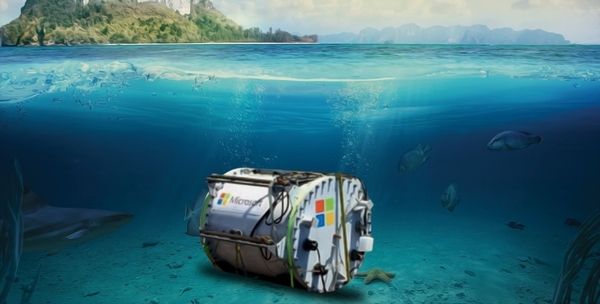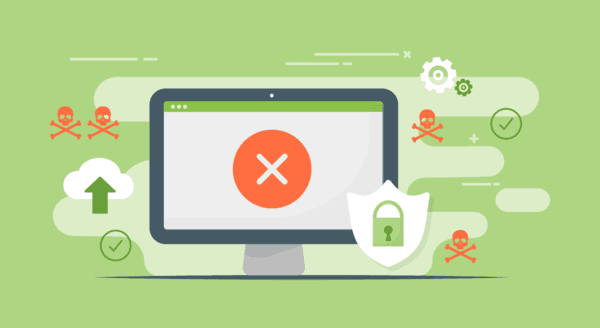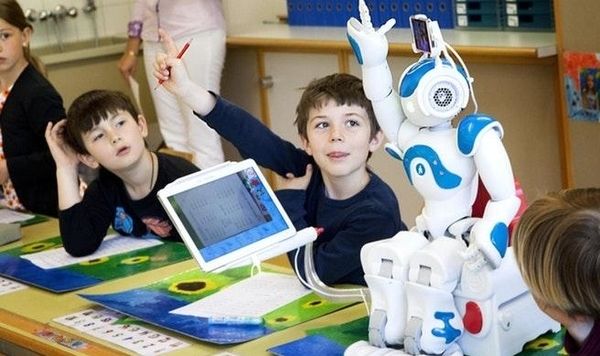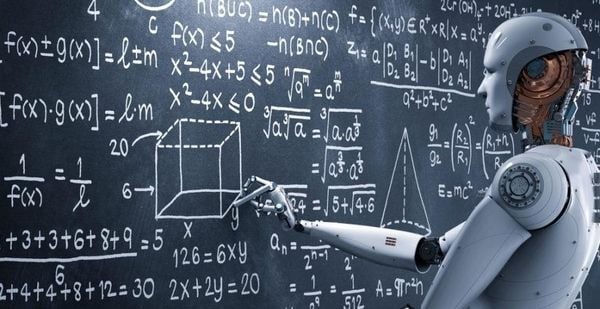
The Most Unique Data Centers Around the World
November 13, 2018
How to Prevent DDoS Attacks
November 14, 2018Currently, Artificial Intelligence (AI) has found its place in the education sector, and as many schools wake up to embrace the technology, we can’t but ask: Could the technology replace teachers? What are the effects of this advancement in today’s classroom? How can we best use it to improve the educational system? To unlock the answers to these questions, please read on.
What Is Artificial Intelligence?
Artificial intelligence is sometimes called machine intelligence, and it refers to the utilization of computer capacities as against natural intelligence. It involves designing computers that mimic human intelligence in speech recognition, learning, reasoning, planning, etc. The tech has application in many areas of life, e.g. in gaming (creating chess-playing robots, in the automobile line (creating self-driving car) and so on. https://www.youtube.com/embed/ZdHhs-I9FVo
Artificial Intelligence in the Classroom
The question as to the possibility of using AI in the classroom has been put to rest by the introduction of a series of AI tools in schools. While the optimists support the idea that the technology will bring about growth and vital improvements to humanity generally, the pessimists defer. They hold the view that AI could spiral out of control and become a disaster as portrayed in science fiction movies like I, Robot (starring Will Smith) and others.
However, as the battle of opinion rages, the optimists seem to put their money where the mouth belong by developing and testing some useful AI programs and systems in schools. Let us now consider some of the brilliant applications in today’s classroom.
Application of AI in the Classroom Today
The following is the spheres of application of machine intelligence.
- Tutoring: With AI, students can have their tutors with them 100% of the time, which is not possible with regular ones. Learners can get extra teaching time and those who require more time to understand a topic can achieve it. For instance, some students require more teaching time than others, with the tech at hand the possibility stares them in the face.
- Using AI Students Grading: Grading process has been around for a long time in the form of computer tests and others. With AI, teachers can quit grading to spend more time on students.
- Trial and Error Elimination in tutoring: Trial and error method of teaching may lead to frustration and time wasting. With intelligent computers in place, time-consuming problems can be solved instantly without following the line of trial and error.
- Virtual Reality Learning: Virtual reality or VR makes learning fun, as students learn about things, places, objects and so on from the comfort of their classrooms without spending money or time traveling. VR videos take you places to see things initially taught theoretically.
https://www.youtube.com/embed/PIxbsrHmZKIGlobal Classroom Possibility: Students from different parts of the world can now participate in a global learning environment with what the system at hand has to offer. It comes with language translators/subtitle creation plug-in that makes it easy to read and understand from different regions, to learn without walls and boundaries.
Examples of AI in the Classroom
The following includes few examples of real-world AI usage in classrooms:
- Milka: Milka, an app from Carnegie Learning, higher education students can get tutoring and real-time feedback in their course of study. It also offers student needing personalized or one-on-one attention an opportunity to do so.
- Brainly: A social media site for where students collaborate while answering and asking classroom questions. It creates that classroom like a community for a personalized teaching experience.
- Thinkster Math: Thinkster Math represents a math tutoring app combining perfectly real math curriculum and one-on-one teaching style. The app takes students on a step-by-step process of solving math problems. The app helps develop math skills by providing video help to aid students’ learning while giving prompt responses.
Netex Learning: Netex Learning offers help to the tutors to incorporate interactive audio, video, and self-assessments to their digital plan to help students learn well. With the technology, teachers with zero tech skills can design their curriculum across different digital platforms and devices within a personalized learning cloud platform.
What’s the Effect of AI in the Classroom
We shall consider the effects of AI in the classroom under the two sub-headings below to give us a better understanding.

The Rise of AI in Education
Today, teachers are using a series of smart content programs, intelligent tutoring systems, and others to help students learn in a more customized approach. As the day passes by, machines will get improved to do more. Tutoring has become more personalized and based on students’ performance with the advent of intelligent tutoring systems (ITS). With such apps, students can easily learn and re-learn at their own pace and ability.
Also, some apps make it easy for students to learn a new course by having the textbooks and course materials simplified for them into an easily digestible guide, e.g. Cram101 or similar ones. Finally, as machine intelligence continues to grow, the future seems to be brighter than ever. Thus, the US education that is based on machine learning is predicted to rise by 47.5% between 2017 and 2021.
AI and the Future of Education
The tech will play a vital role in the development of education in the nearest future. With the continual research and improvement of machine learning and intelligence, educational systems will experience a tremendous improvement. Students will be able to learn new things in a much better way with advanced tutor apps. When fully developed, such apps can become education mentors for students and provide engaging learning aid and opportunities.

As AI grows, having a global classroom becomes easy and possible. Although some schools run online programs/courses, they never offer an engaging and personalized learning approach; The advancement would fill that gap as tomorrow dawns.
Drawbacks of AI in Education
Here are few hitches that could affect the full development of machine intelligence in education:
- It does not teach social skills and human connections; hence it cannot replace human teachers.
- The tech requires internet connectivity always which comes with a cost and could be a problem in countries with no/slow connectivity.
- AI comes with a huge cost implication; however, as the technology spreads the price would be forced down
- Intelligent machines could suffer error peculiar to computer systems, e.g. crashing, upgrade issues, virus attacks, etc.
Wrapping up
Based on the many benefits of artificial intelligence in the classroom, the technology will not be able to substitute teachers, since the latter provides human connection and enhance social skills development in students. However, AI will make teachers’ jobs easier and more efficient. It will help students and parents alike to become better!
